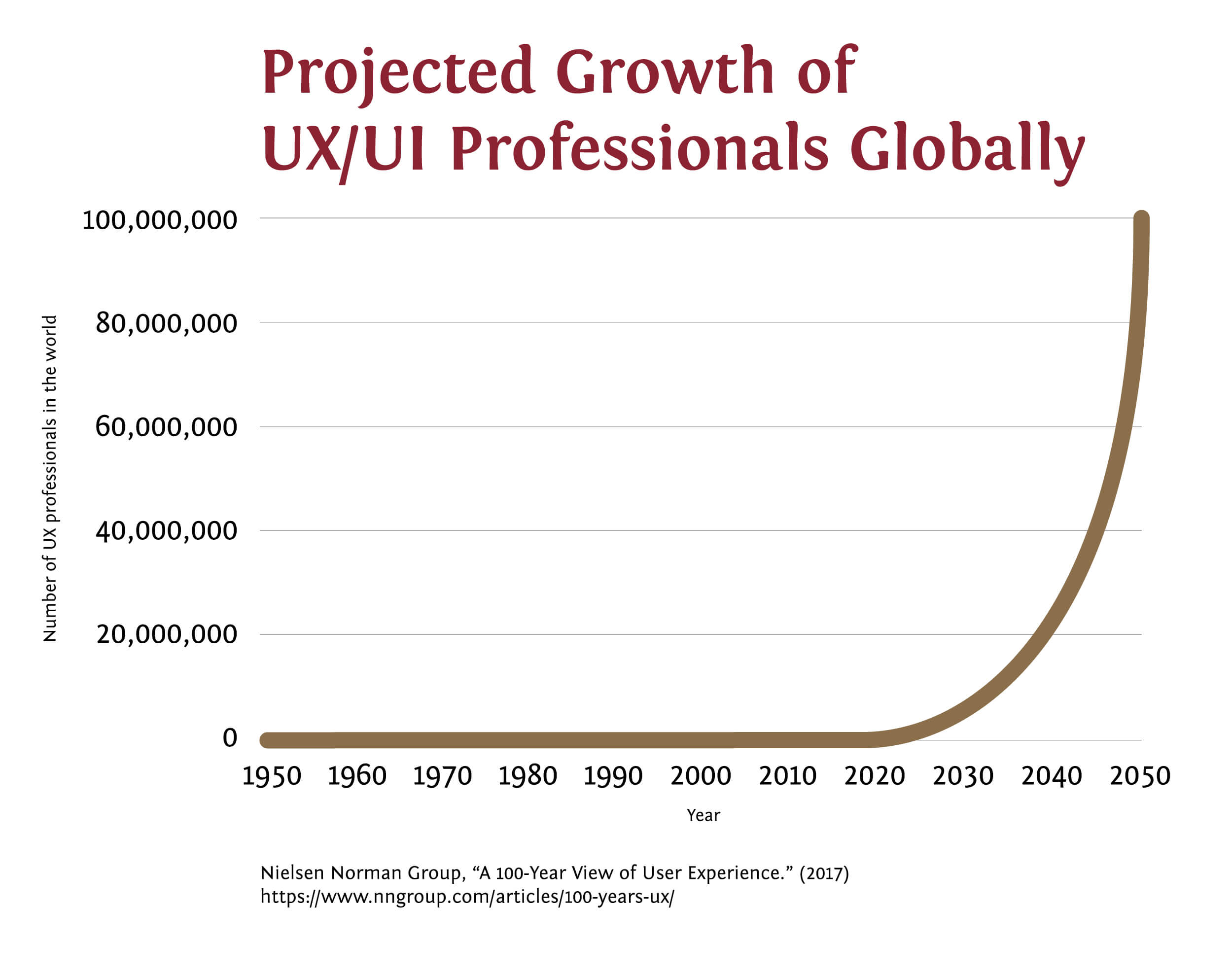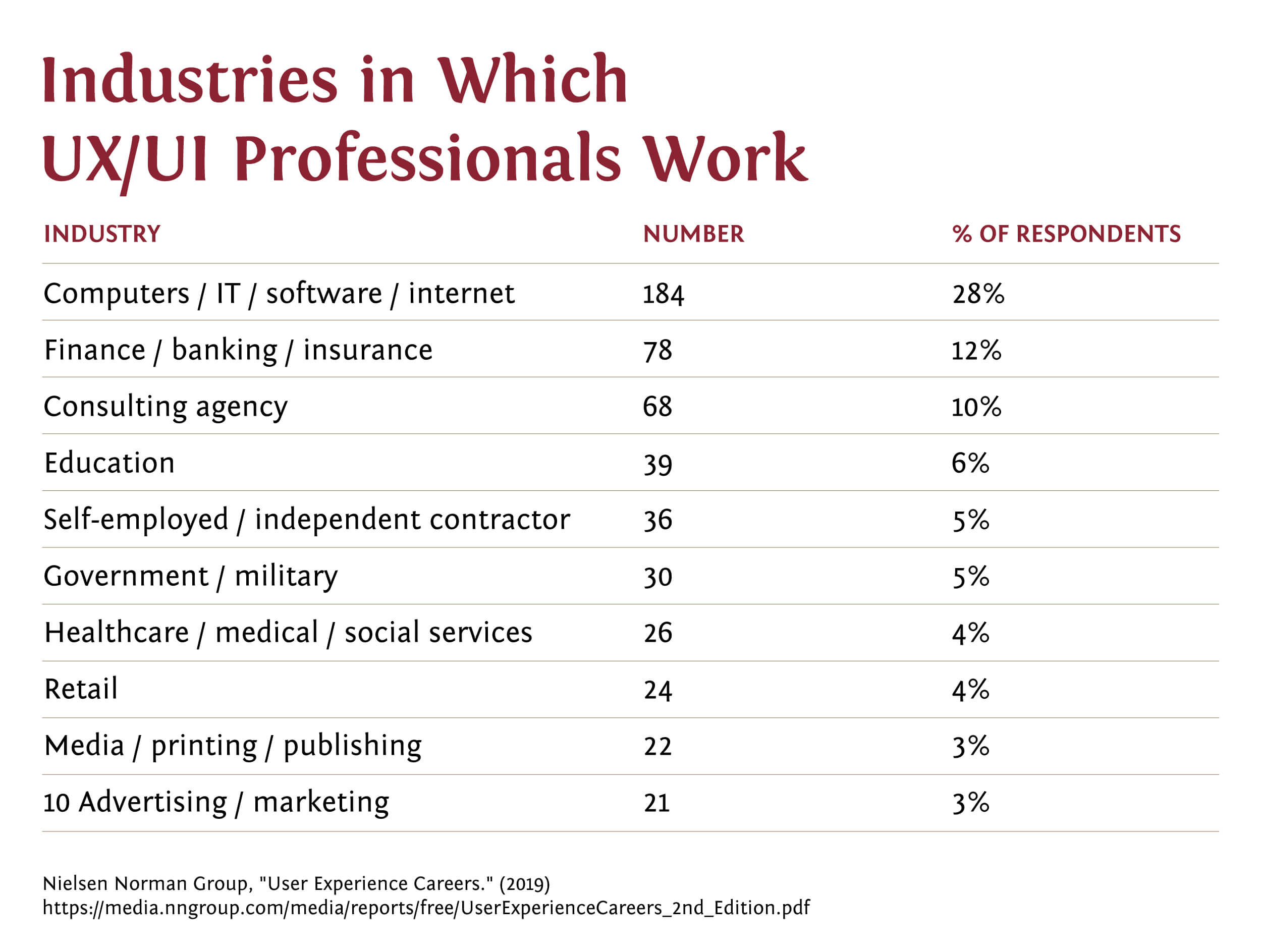Tips to Start a Career in UI Design

When it comes to websites and mobile apps, we all know an ugly product when we see one. Whether it’s the buttons that are just a hair too small or the unsettling color palette, clunky interfaces leave users with an overwhelming urge to disengage and look away.
Excellent designs, on the other hand, are virtually invisible. Most people rarely stop to marvel at just how seamlessly functional and intuitive user well-done interfaces are. Well-designed sites guide us to the tools and solutions we need right away, often before realizing that we need anything at all.
If you happen to one of the few users who do notice the sweet spot between design, functionality, and decision-making, you may be wondering how to get into UI design. If so, you’re in the right place — so keep reading. In this article, we’ll walk you through all the resources you need to become a UI designer.
But first, we should provide some background on this expanding field and how you might build a career within it. So, let’s answer the most obvious question first: What is UI design, exactly?
User interface (UI) design is primarily focused on creating compelling visual elements and structuring information in a way that is both attractive to users and intuitive to their needs.
For modern companies, quality UI design is nothing short of a necessity. As Yiting Hao, UX designer with the AI company ViSenze once commented for The Next Web: “Without UX/UI design, the product will struggle to solve both user and business problems to come up with good user experience solutions. Imagine interior designers building a home’s interior design without understanding their client’s functional or aesthetic needs — the outcome will not be satisfactory.”
By ensuring that a product is intuitive and straightforward to access, designers forge pathways that consumers can then use to find other services and products that they may not even know that they need. But just what are the benefits of proper UI design?
Successful UI design empowers companies to achieve a competitive advantage, improve customer conversion rates, and boost client engagement and retention. Moreover, UI design can slash product development costs by ensuring that costly mistakes are avoided through early prototyping and research.
These key benefits have backing in research. In 2018, researchers for McKinsey found a “strong correlation between high [design] scores and superior business performance,” noting that businesses ranked in the top quartile of design scores outperformed benchmark growth by as much as two-to-one.
Over five years, companies that performed within this top quartile experienced 32 percent higher revenue growth and saw a 56 percent higher total return to shareholders than their average-design competitors. These findings were consistent across the three industries surveyed: medical tech, consumer goods, and retail banking.
These conclusions make a simple but powerful point: No matter the business, sound design principles are crucial to a final product’s success.
Given this data, it isn’t shocking that the UX/UI industry is growing fast, or that more design students are wondering how to get into UI design. Analysts for NNGroup anticipate that the number of UX/UI professionals will increase from 1 million in 2017 to roughly 100 million by 2050.

“Is it realistic to expect that an entire percent of the population will be occupied by something as esoteric as user experience?” Jakob Nielson, a specialist at the UX Research firm NNGroup, writes of the benchmark. “Yes, because UX won’t be esoteric in the future. It will be a key driver of the world economy.”
As demand for talented UI professionals surges, the career prospects are well-distributed across various industries. One report from NNGroup found (PDF, 4.5 MB) that 28 percent of UI professionals work in tech, 12 percent in finance, 10 percent in consulting, 6 percent in education, 5 percent in government, and 4 percent in health care.

But if you’re wondering how to become a UI designer, you have to understand that there isn’t a clear, straightforward path to follow. While 82 percent of UX professionals hold a degree, researchers for the above NNGroup report noted that (PDF, 4.5 MB) “many [professionals] did not have traditional, UX-related degrees — which suggests that the field still values experience and soft skills over formal education. Still, a relevant degree can’t hurt and can get you a foot in the door if you’re new to the field.”
No matter your path, those aspiring to a UI design career need to pick up on the core skills and complement whatever educational background they already have. Below, we’ll review the best ways to pick up the skills and connections you’ll need to become a UI designer.
Follow Books, Blogs, and YouTube Channels
If you’re wondering how to get into UI design, a little light research is a great place to start. We encourage all aspiring designers and industry-hardened professionals to dig into books, blogs, and videos related to UI design. We’ve curated some of the best online and in-print resources for your consideration.
Books
100 Things Every Designer Needs to Know About People (Voices That Matter)
Author: Susan Weinschenk
In this straightforward read, Weinschenk melds formal UX and psychology research with easy-to-follow and practical examples. 100 Things Every Designer Needs to Know About People teaches its readers to design intuitive and engaging work for a host of mediums, from traditional print to new media and digital applications.
Designing with the Mind in Mind
Author: Jeff Johnson
In Designing with the Mind in Mind, Johnson contextualizes his comprehensive overview of how to connect common design principles with human behavior in perceptual and cognitive psychology. In this new edition, you’ll understand how to effectively capture human attention and make the right trade-offs when facing conflicting design choices.
Don’t Make Me Think, Revisited
Author: Steve Krug
Krug’s book may be from the year 2000, yet it is anything but outdated — if nothing else, it’s practically required reading for anyone new to UI. From cover to cover, Krug helps readers understand the principles underpinning intuitive navigation, informational hierarchy, and capturing sustained interest.
Evil by Design
Author: Chris Nodder
In Evil by Design, Nodder writes critically about the growing use of “dark patterns” in the field of UI, which are design patterns that cause users to perform behaviors against their best interest. He also provides readers with the tools to create compelling designs by identifying users’ most fundamental desires.
The Design of Everyday Things
Author: Don Norman
We’ve all encountered ambiguity in our daily lives. Not sure what switch turns on the kitchen lights? Or whether that door is a push or pull? As it turns out, the fault isn’t with you — it’s with bad designs that ignore the core facets of cognitive psychology. Norman writes about how to make designs intuitive, thereby empowering aspiring designers to effortlessly lead users to make the right action at the right time.
The User Experience Team of One: A Research and Design Survival Guide
Author: Leah Buley
Buley’s approachable survival guide provides fresh insights into the world of UX. Whether you’re a newcomer to the field or a veteran searching for new inspiration, The User Experience Team of One provides a range of approaches that provide higher impact with less time and effort than conventional deliverables demand.
Blogs
Boxes and Arrows
Boxes and Arrows is dedicated to discussing graphic design, UI, information architecture, and business design. Founded in 2001, the blog has since grown into a peer-written journal that promotes exemplary UI techniques.
Usability Geek
Usability Geek is a platform covering everything from UI design to UX guidelines, tools, validation testing, and more. The site discusses how to best optimize websites with usability, functionality, and intuitiveness in mind.
Smashing Magazine
Smashing Magazine is a more technical, peer-contributed platform that discusses effective design testing, RESTful API development, error handling practices, and responsive web design.
Little Big Details
Little Big Details is a curated, thoughtful collection of design details. The blog is intended to be a source of inspiration for all varieties of designers as they prototype new interfaces.
YouTube Channels
In addition to reading books and blogs, we also recommend following popular UI design tutorial channels on YouTube and keeping yourself motivated by reaching out to other self-taught creators, friends, or communities interested in UI.
Need some ideas? Check out these channels.
This channel offers practical design tutorials, insights into working as a professional designer, and thoughtful videos about how to build a career in design.
Maex markets itself as a design channel made by designers, for designers. It provides a host of practical tutorials on in-demand skills and softwares.
Showalter’s channel offers a charismatic and informative look into a variety of useful design tools and skills.
Train Yourself in UI Design
If you genuinely want to know how to become a UI designer, you will need to build up a few core competencies. Thankfully, there are many ways to start learning the fundamental methodologies, technologies, and design principles that underlie all excellent UI.
Self-Taught
Self-directed learning is an attractive option for some — it allows aspiring UI designers to develop the skills they need at an exceedingly low cost, and according to their own schedule.
Teaching oneself is not for the faint of heart, but if you have discipline and sufficient motivation, it’s possible to learn UI through following self-guided tutorials, free ebooks, and other resources. We’re lucky enough to live in the golden era of open-source content, meaning a great deal of the knowledge you need to build your foundational skills in UI is available online.
Choose your self-guided program wisely, and reflect on your options before you commit to a course. Ask yourself — which concrete, employable skills will the course provide? How will the course help me become a better UI designer?
Most self-guided courses are available for free or a nominal one-time cost. It is worth noting that paid programs may be well worth their expense; unfortunately, “free” doesn’t always equate to “best.” Before you choose any one course, make sure to read student reviews and outcomes.
Need some hints on where to look for high-quality online learning platforms? We’ve got you covered.
- Khan Academy offers a variety of courses on basic coding and design-centered programming.
- Udemy provides paid courses and an extensive library of resources to UI design students.
Boot Camps
Over the past decade, boot camps have become tremendously popular among those looking to upskill or make a career change. UX/UI boot camps are short-term, intensive training programs that equip students with all the on-the-job skills they need for a particular field.
The standard boot camp takes anywhere from 3 to 6 months to complete, depending on the depth and breadth of coursework covered, as well as whether or not the program is full-time or part-time. Boot camps are significantly less time- and cost-intensive than degree programs.
However, it is worth noting that they often focus on giving learners practical skills and lack the bandwidth to provide comprehensive insights into theoretical principles. These programs can be immensely useful for those who want to gain employable skills quickly.
Want to see firsthand what a boot camp could offer you? Check out University of Denver Boot Camps’ program offerings here.
Degrees
If you have the time, resources, and inclination to pursue it, an undergraduate degree can provide you with an excellent way to demonstrate your interest in and suitability to a career in UI design. University degrees are highly regarded by potential employers and provide many graduates with their first connections.
While there are few degrees explicitly tailored to UI, aspiring designers can pursue a variety of relevant technical and humanistic programs, including Computer Science, Human-Computer Interaction, Psychology, Design, and even Anthropology. Whatever the major you choose, it’s crucial that your work shows a keen interest in design.
Build Your Portfolio
A portfolio is one of the most invaluable tools you have to demonstrate your skills to potential employers, as it shows that you can put your theoretical insights into practice.
Many new to the field struggle to think of ideas: Just what should go into a portfolio? What sorts of skills are employers looking to see? Below are some of our top recommendations.
Prototyping
You can start building a repertoire of projects through prototyping, a discipline used by UI designers on the job. As mentioned earlier, prototypes are sample versions of a final product, which are then used for testing and refining.
Prototypes can help you solve issues in the beginning stages of developing a fully-fledged product. Employers may specifically request to see prototypes as proof of your thinking process.
At Your Current Company
Show initiative at your current company by volunteering to take on new projects. Take the time to notice key issue areas during your workday when you encounter interfaces. Completing projects sharpens your skill set and gives your current employer something beneficial to say on your behalf as you apply to roles in the UI design field.
Volunteer for Friends or Non-Profits
Volunteer organizations are always looking for active, helpful people in the community to take on projects for free. Local organizations often lack online platforms and optimized interfaces — so volunteer to demonstrate your skills and your commitment to the broader community!
Work Within an Educational Framework
It’s often easiest to develop a large, complex project through a boot camp or at the end of a university program. Most structured courses require a final capstone project that is suitable to show off to future employers.
Meet-Ups and Networking
Networking is an essential aspect of building a career in UI — and not only because the right connection could launch your career. UI design requires you to communicate effectively with a diverse set of stakeholders, clients, and departmental actors; what better way to develop your communication skills than via networking and meet-up events?
Moreover, connecting with new people may help open up a broader set of opportunities as they refer you to their connections. Good networking practices also provide you with future resources to lean upon when you’re between jobs — so don’t let shyness hold you back from networking!
Where Are You on Your UI Design Career Path?
There’s no better time than now to jump into UI design. If you’re still interested in learning how to be a UI designer, start looking into the educational resources available to you.
While boot camps, university programs, and online courses are all fantastic avenues for learning, one path will probably suit you better than the others. When you start looking into your options, keep the following questions in mind:
- How much time and money can I reasonably dedicate to my education?
- Am I a learner who works better in a formal environment, or a self-directed one?
- Is there anything I could be doing to better prepare myself for a UI career now?
- What actions can I take to learn more about my options today?
Try answering the above questions. The answers you find might be exactly what you need to start down your UI design career path.

 Live Chat
Live Chat